Mozilla Hubs
Mozilla Hubs
Getting social in VR for Mozilla's Mixed Reality team.
Getting social in VR for Mozilla's Mixed Reality team.
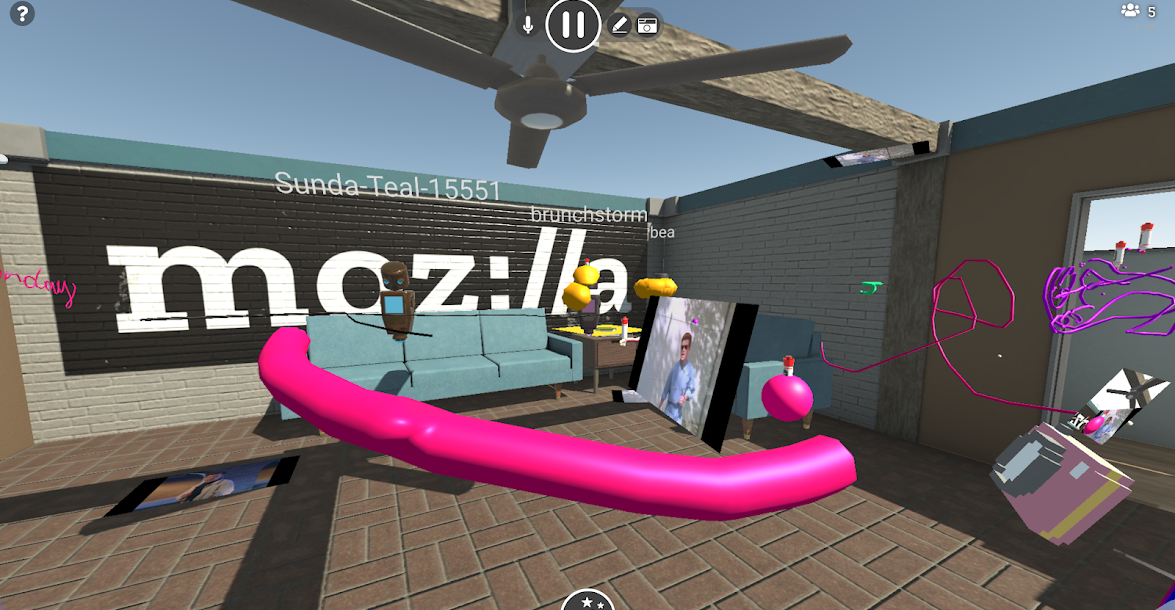
In this 2-week exploration, Mozilla asked 12 CIID students to discover and describe ideas for future use cases for their Hubs social platform. With many predicting a future where virtual reality becomes a primary and common mode of connecting with family, friends and colleagues, Mozilla created Hubs to envisions a future where our embodied experiences are not limited or controlled by a series of closed platform. Through the platform, Mozilla is providing a showcase for what this can be, ensuring that everyone can experience and create web-based social VR experiences accross multiple mediums, from headsets to mobile and desktop. During this project, Rina Shumylo and I presented the team at Mozilla with the LivingRoom concept, a vision for a service that would allow friends to share and consume entertainement together in virtual space.
In this 2-week exploration, Mozilla asked 12 CIID students to discover and describe ideas for future use cases for their Hubs social platform. With many predicting a future where virtual reality becomes a primary and common mode of connecting with family, friends and colleagues, Mozilla created Hubs to envisions a future where our embodied experiences are not limited or controlled by a series of closed platform. Through the platform, Mozilla is providing a showcase for what this can be, ensuring that everyone can experience and create web-based social VR experiences accross multiple mediums, from headsets to mobile and desktop. During this project, Rina Shumylo and I presented the team at Mozilla with the LivingRoom concept, a vision for a service that would allow friends to share and consume entertainement together in virtual space.
THE CONCEPT WE PRESENTED
The concept : LivingRoom
LivingRoom
While the development of the Internet has opened new ways to easily keep track of what your friends are listening to and watching, the dematerialization of medias also took away the pleasure of peeking in a friend's bookshelf or the rituals of going at a friend's house to enjoy their best CDs.
The LivingRoom is a private room for close friends who want to give a virtual home to the media they consume and share togethe, making it possible to discover content in a spatial way that replicates the way you would normally gather around entertainement in the real world.
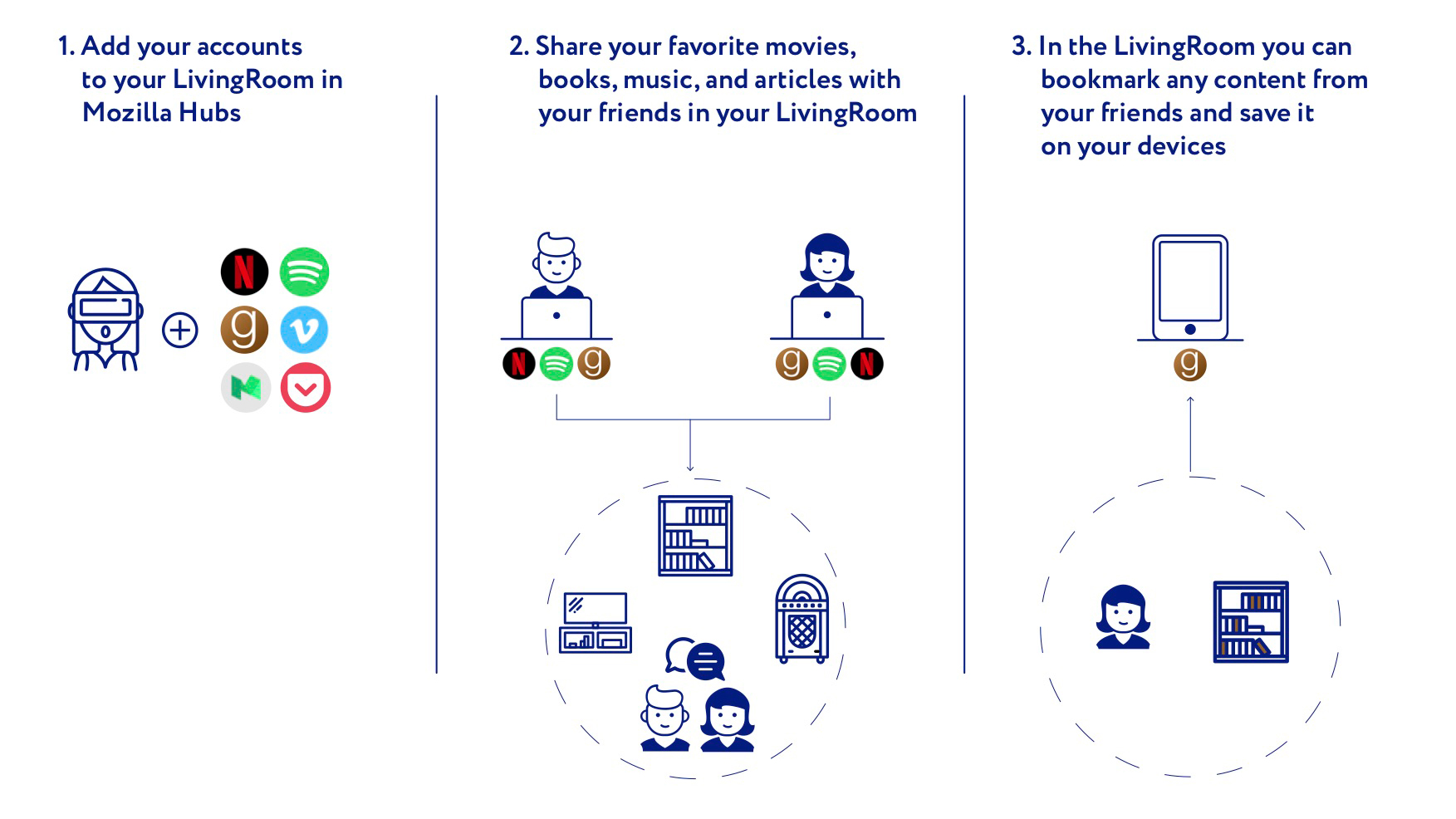
How might we keep people engaged with social VR over time ?
In designing a concept for a persistent virtual room, we quickly understood that one of the key challenge was that the experience might not might not invite people to come back regularly after a few visits. To keep people engaged with the experience over a long time span, we turned to the idea of evolution as a way to maintain an effect of surprise and curiosity to the experience over multiple visits.
Adding magic to the experience with the Inspiration Fountain
During our time spent in Hubs over the course of this project, we noticed that many of us couldn't help but constantly play with the objects in the room, especially a yellow duck that could infinitely be thrown around. After realizing that this almost compulsive behavior came from people's tendency to adapt their actions in VR to the few things things they were able to do, we designed a mechanic to let people directly interact with the room and its content through these playful interactions.
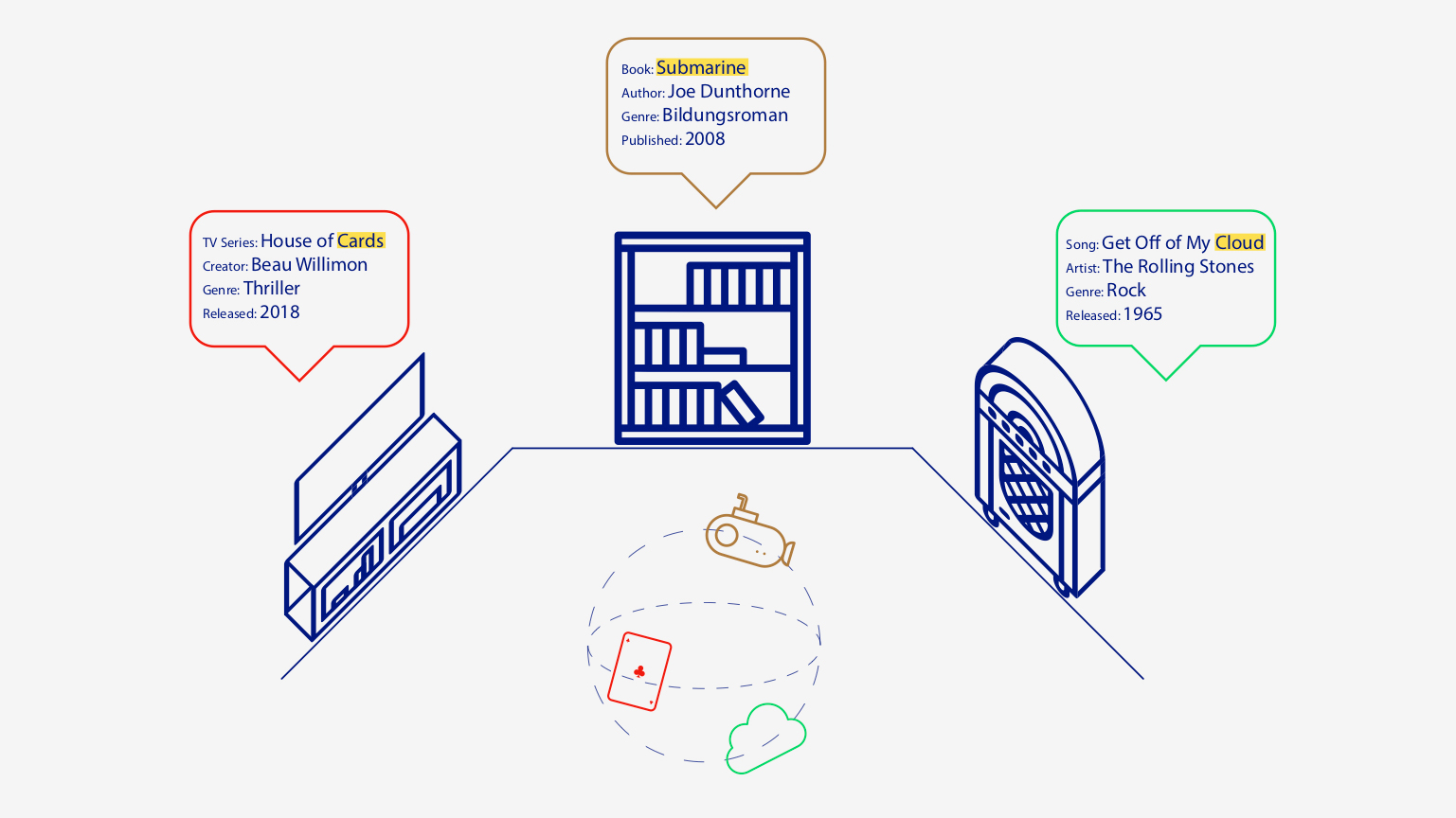
The Inspiration Fountain generates objects in the room by using text-analysis on the metadata of the content saved in the different libraries synchronized in a LivingRoom. These objects are here to give visitors something to play with while in the room, but also to help discover content in a surprising way. When an object is thrown at one of the libraries, it selects content related to it.
For example, throwing a Submarine from the Inspiration Fountain into the Spotify jukebox would play Yellow Submarine from the Beatles, and throwing it at the Netflix TV would play a movie about naval battles.
A CONSTANTLY EVOLVING SPACE
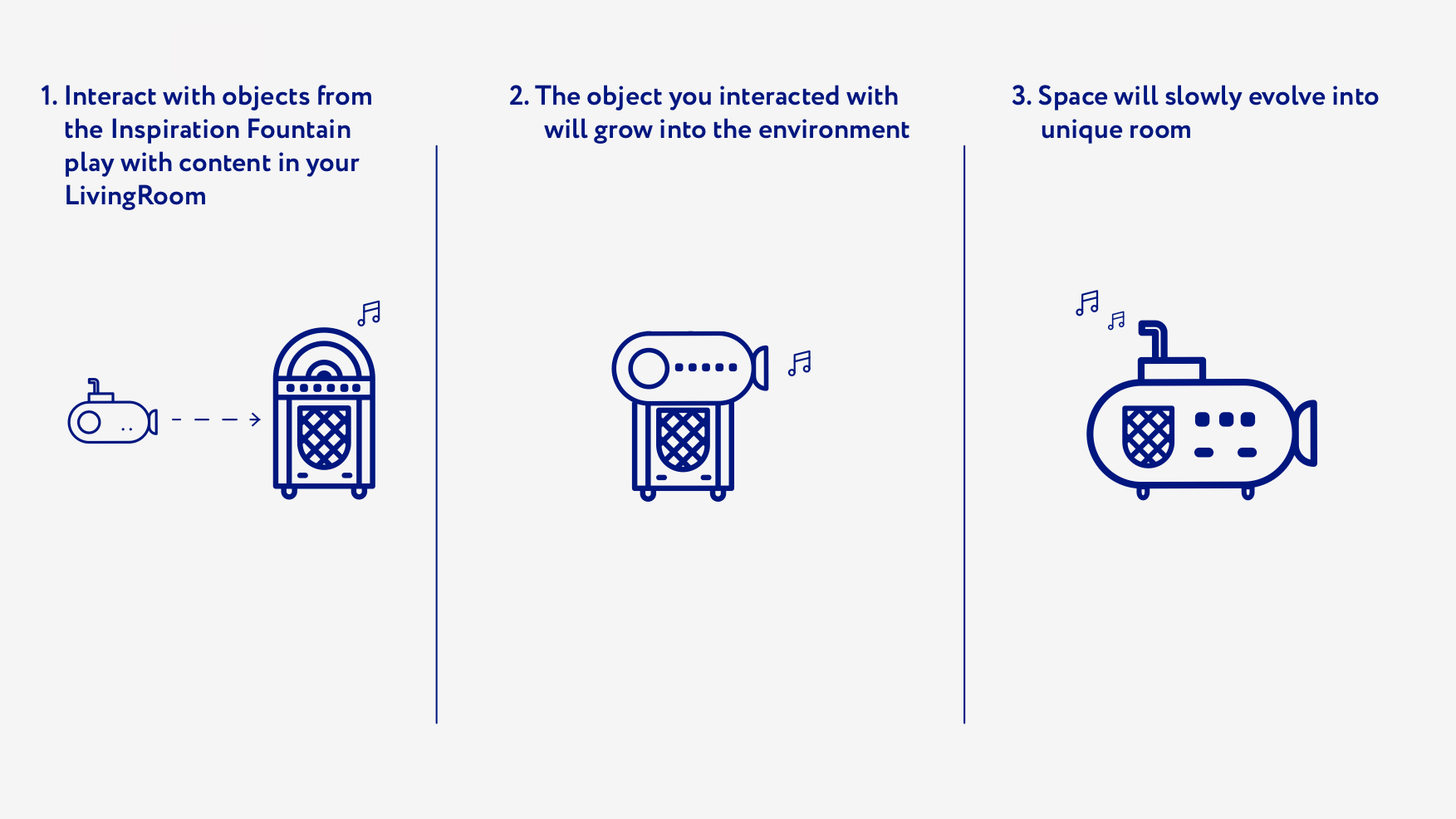
Repeatedly playing with the same objects slowly shapes the look and the feel of a LivingRoom used by a group of friends. As people start playing with objects repeatedly, the space integrates them into the environment, turning the room into a tailored playground. Over time, people's favorite media and their behavior inside this private space reflects on the room itself.
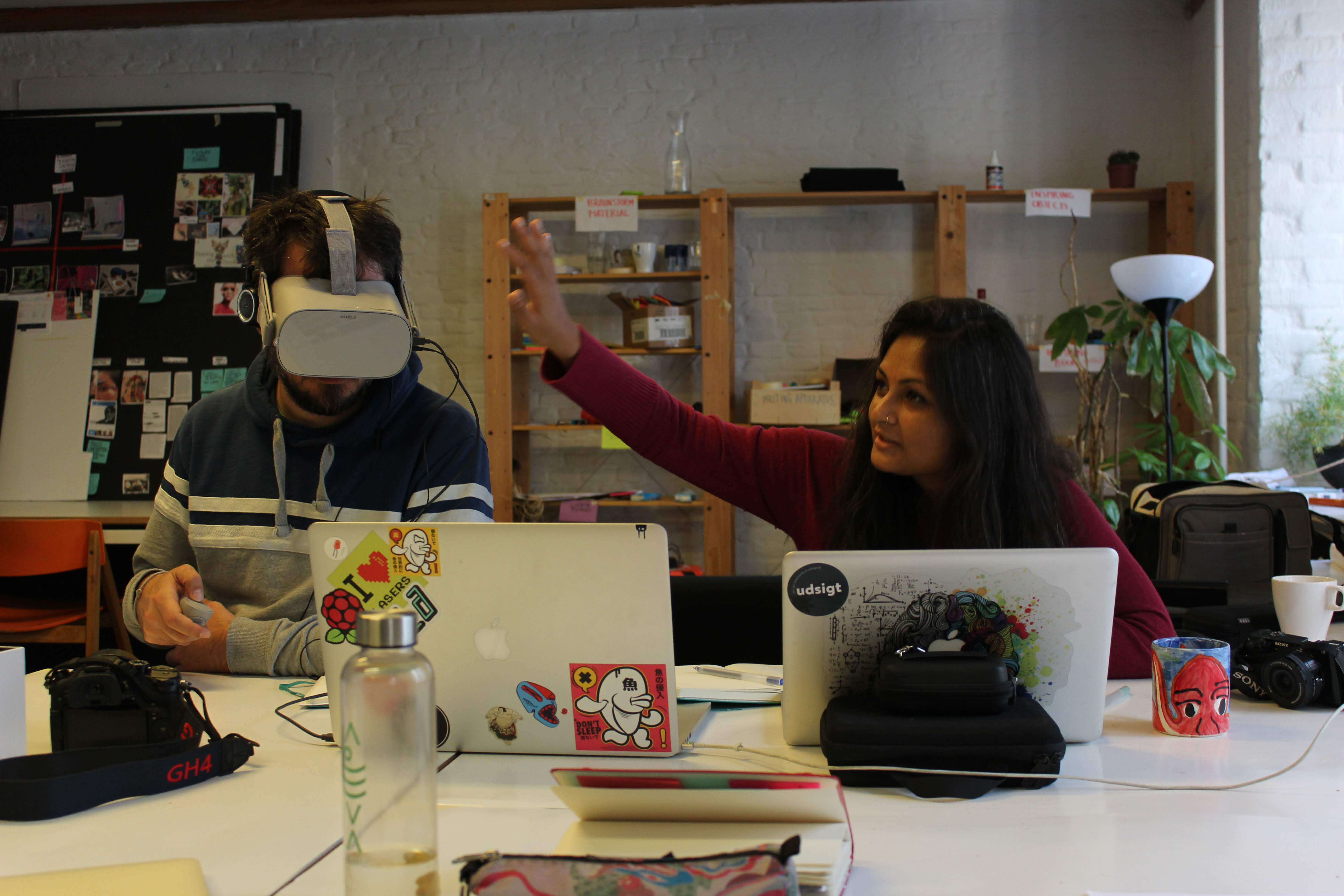
Living across multiple realities for two weeks
Note : this process, and the writings shared below result from the collective effort of our entire studio and our two leads on this project, Gitte Jonsdatter and Joshua Walton.
1. Desk Research
1. Desk Research
A series of expert interviews about the state of the art gave the team a quick grounding in the challenges and potential that artists, educators and designers working in this space are seeing in terms of experience.
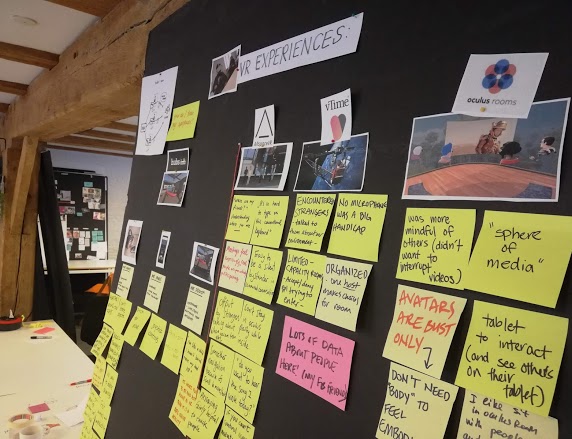
Analysing VR experiences
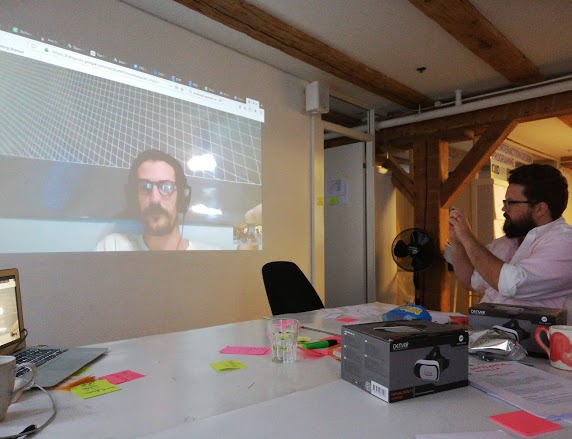
Remote expert interviews
2. Experience research in conventional reality and virtual reality
2. Experience research in conventional reality and virtual reality
The team conducted interviews to explore the interactions that build and strengthen relationships between family, friends and colleagues. From the interviews we collected 42 stories based on real relationships, described in moments of interaction: people, contexts, interactions, and the supporting things, media, services that were essential.
Next, we put on the googles and headed into some immersive experiences on a range of platforms. This gave us a sense of what embodied interaction feels like, and to see how regulars in these spaces are interaction.
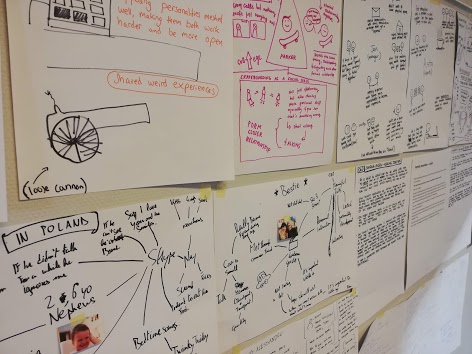
Documenting stories of social interactions
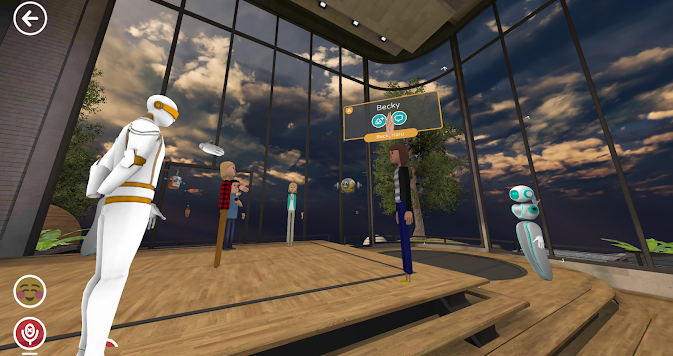
Remote expert interviews
3. Analysis
3. Analysis
Sorting through the data led us to identify patterns of needs and behaviors common across many types of relationships and contexts. We then mapped these to narrow down to specific areas of interest and how they relate. The exploration of the multiple linkages and ways of slicing experience led to identifying the 6 overall design challenges which concepts address.
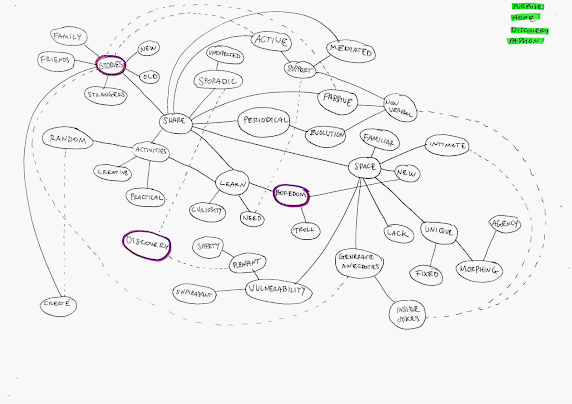
Mapping of interaction types: by motivations
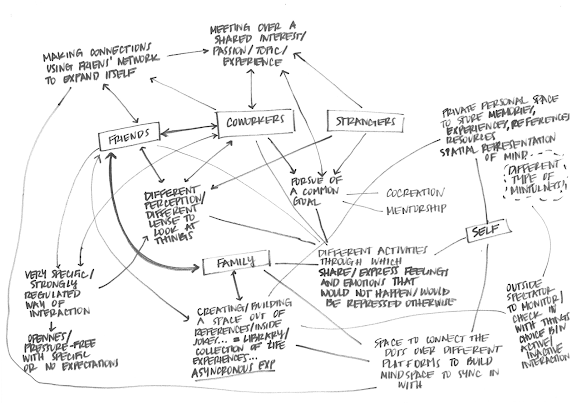
Mapping of interaction types & needs: by activity
Mapping of interaction types & needs: by activity
4. Ideation
4. Ideation
Based on the core set of underlying social needs and behaviors, in smaller teams we quickly generated hundreds of possible solutions. Clustering these small ideas, teams combined and built upon them to develop them into experience concepts.
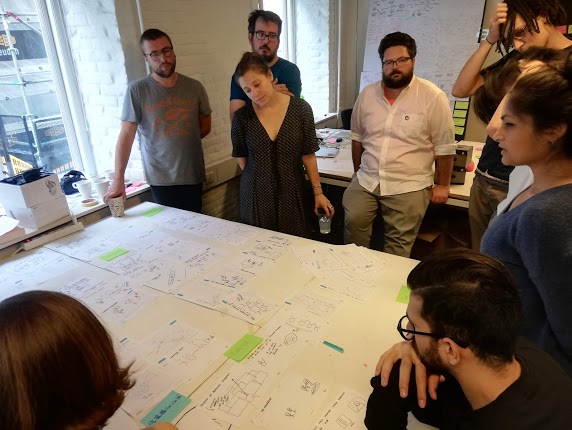
Sorting and discussion initial ideas
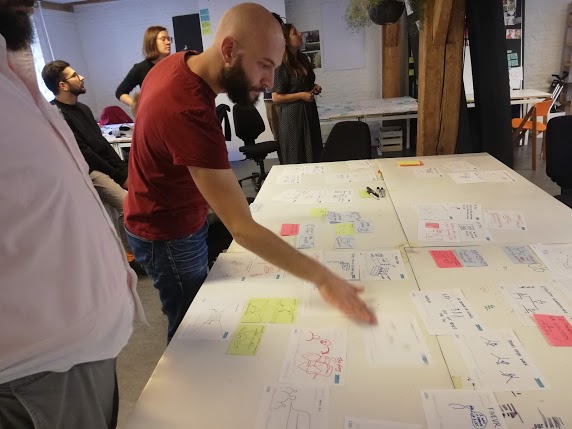
Finding related ideas to cluster into concepts
Finding related ideas to cluster into concepts
5. Bodystorming
5. Bodystorming
To test and refine concepts, we used bodystorming and VR bodystorming to play out scenarios of future experiences. Experiencing a concept as it might play out over time allowed us to evaluate how compelling it might be, understand specifics, prioritize elements.
Insights & Beliefs
Research and analysis led the team to outline a few core beliefs about experience which guided our thinking about the role of virtual presence in social interaction. We see these as guiding principles for ideas we develop for Hubs going foward.
- Meaningful social interaction occurs across a continuum of platforms: Virtual embodiment should offer easy transitions in and out.
- 3D contexts with guidance on why to use the 3rd dimension were more satisfying: Virtual embodiment should enable guiding/guided activities
We can draw inspiration from Memes about how to build & expand communities and apply these principles in 3D - lo-fi, easily created contributions bring life to a space by providing all-access, distributed content. The low barrier to participation, with lean-back commenting, and recurring themes create reasons to return: Hubs should offer lo-fi, easy access, quick consumption options.
Recall/persistence from previous interactions is a common element of maintaining relationships over time: Hubs should either support persistence, or provide easy tools to export/save content.
Industry Project at CIID in 2018 for Mozilla Mixed Reality
Leads: Gitte Jonsdatter & Joshua Walton
Teammate : Rina Shumylo
Role: People Centered Research, Exploratory Research of the VR medium, Analysis of the data collected on social relationships, Concept development, Production of the video prototype.
Full project team : Federico Peliti, Fahmida Azad, Julius Ingemann Breitenstein, Abishek Kumar, Sami Désir, Rina Shumylo, Jing Yu, Anna Smeragliuolo, Alex Penman, Mantas Lilis, Ubaldo Andrea Desiato, Micol Galeotti
Get in touch
Get in touch
Get in touch
Get in touch
sami.desir@gmail.com
sami.desir@gmail.com
sami.desir@gmail.com
sami.desir@gmail.com
Projects
Projects
Projects
Projects